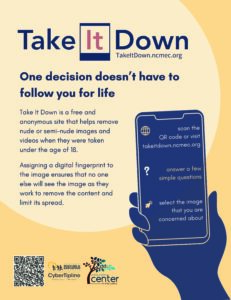Verbal Abuse
It takes honest conversation to work things out–insulting, name-calling, or manipulating a partner indicate verbal abuse in a relationship.
Physical Abuse
Pushing, shoving, hitting, or kicking in anger are all signs that physical abuse in a relationship has gone too far. Seek advice from trusted adults, counselors, or coaches to help separate.
Controlling Behavior or Forced Sex
Someone who exhibits controlling behavior may also isolate his/her partner from friends, restrict the partner’s involvement in extracurricular activities, or require knowledge about significant other’s whereabouts at all times.
Threats Receiving explicit threats or fearing impending physical/verbal abuse indicates unhealthy boundaries in a relationship.
Blame or Shame
Making excuses for your partners behavior and blaming yourself for being mistreated only keeps you in an unhealthy relationship.
Digital Privacy
Controlling one another’s social media accounts by insisting to have access is a form of digital abuse
Photos & Sexting
Someone who tries to demand, manipulate, coerce, or even threaten with sending or forwarding a sext could face criminal charges.



